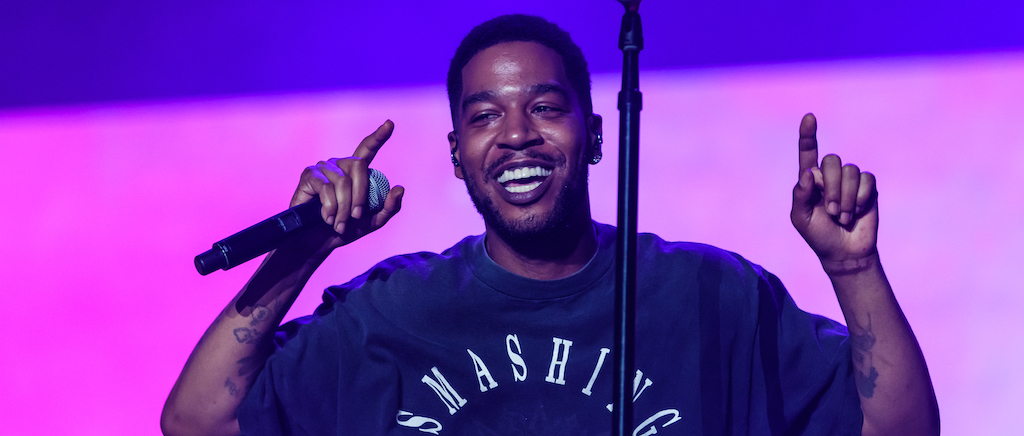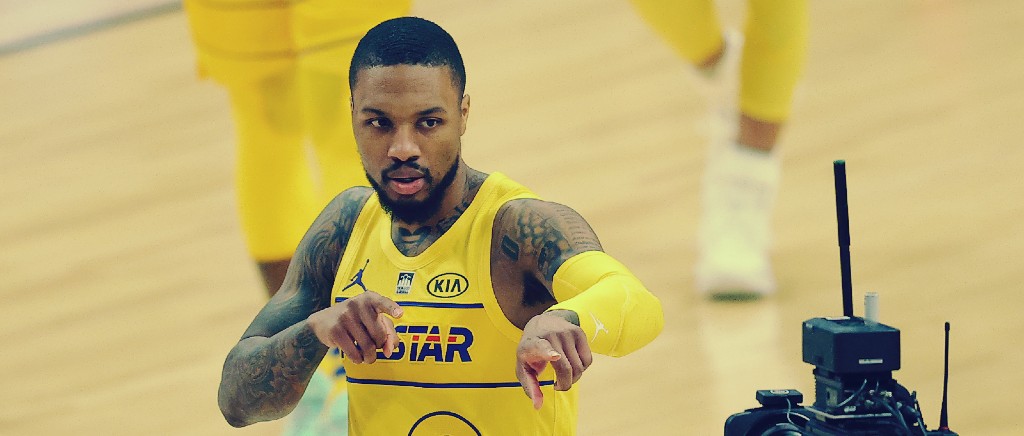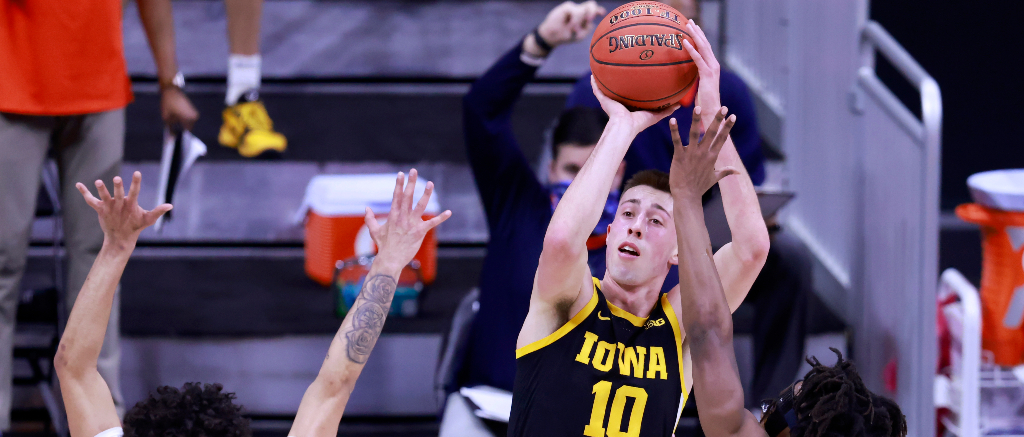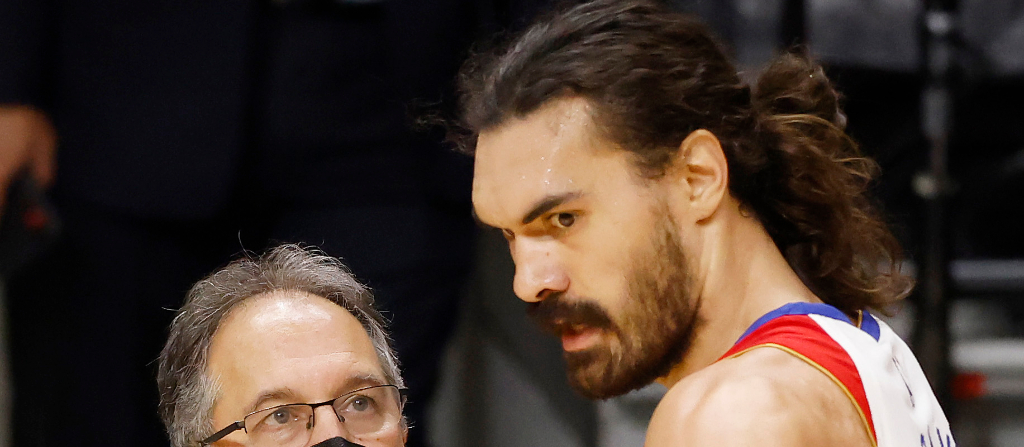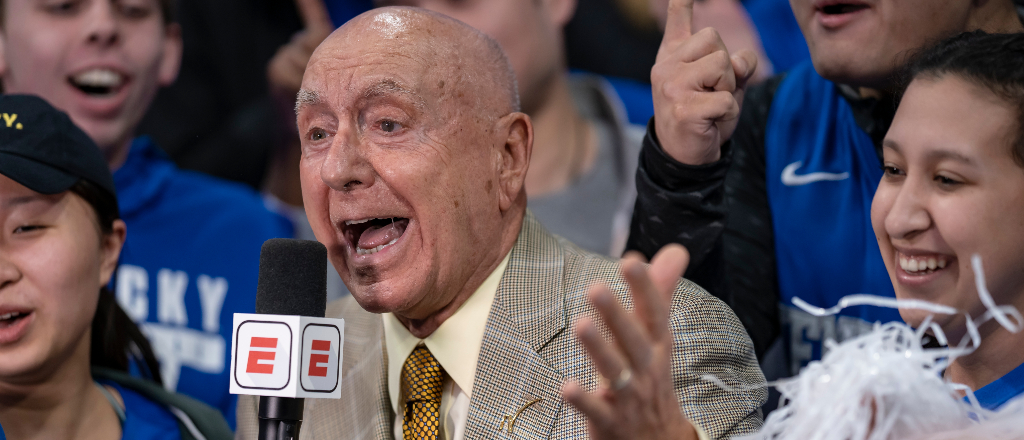Perhaps the best bottle of champagne Nick Elam ever had got popped in a Chicago Italian restaurant on Feb. 17, 2020. Elam and a friend, at the conclusion of the 2020 NBA All-Star Game, went to celebrate one of the game’s newest elements. Things could not have gone much better for Elam, who was invited to the game by the league and whose years-long effort to get a funny little concept for how a basketball game should end into the national conscious.
The Elam Ending was adopted by the NBA for the game, and it brought an element of suspense and intensity to the normally mellow All-Star Game, as the two teams locked in on both ends of the floor for the chase to that magic number — in that instance, 157 — with Anthony Davis sinking the game-winning free throw.
“I always dive into the numbers later on, but as much as I can, whether it’s in [The Basketball Tournament] or in the All-Star Game, I like to watch it unfold first, just as a fan,” Elam told Dime over the phone. “I don’t have my spreadsheet out or anything like that. I just want to absorb and try to get a feel for the things that can’t be quantified.
“And what I was seeing and hearing and feeling, all throughout that quarter … I had high expectations, it exceeded my high expectations,” he continues, the excitement in his points palpable more than a year later. “It was just amazing.”
If you have never heard of the Elam Ending, or if you need a refresher, the basic gist is this: 14 years ago, Elam sought out a better way to end basketball games. Now a professor at Ball State, Elam came up with a few ideas, but the one that has garnered so much attention is the application in The Basketball Tournament in which, upon the first dead ball after the under four minute timeout in the fourth quarter, the clock is turned off, the leading team’s score gets eight added to it, a target score is set, and the first team to hit that number wins.
“It’s not this totally newfangled thing,” Elam says after I mention it reminds me of playing to 11 or 21 on a playground. “It hearkens back to the way that so many of us learned to play basketball, which is to a target score.”
When it comes to the NBA, Elam has been reaching out to the league since 2007 about trying to figure out a way for them to adopt it without being, in his words, “a total pest.” Nothing materialized, but things changed on Jan. 23, 2020. A call from the league featured a confession: Late game play at the highest level of the game could be better. The Players’ Association agrees, and the two sides agreed to adopt the Elam Ending for the 2020 All-Star Game, with the league tacking 35 onto the leading team’s score heading into the fourth quarter and letting the two sides play a totally untimed frame.
And then, three days later, Kobe Bryant died. The league shuffled its adaptation, making it 24 points they would add onto that higher score as a way to honor Bryant. When it came time for the event in Chicago, Elam’s brain child was given its most prominent showcase yet with the added twist to honor a Hall of Famer. The game, of course, ended with that Davis free throw to help Team LeBron topple Team Giannis 157-155, and in a way, Elam was extra happy that it ended with the least exciting play in the game deciding things.
As he tells it, games ending with a free throw is the gripe he hears the most among those who don’t necessarily love the idea. He has numbers to back up why this is somewhat off-base — 80-85 percent of games in TBT end in “a meaningful field goal,” something that only applies to one percent of games with a standard ending — but generally, Elam was just happy that folks got the chance to see that there can be excitement when a free throw is needed to decide a game.
I was fortunate in that I got to catch up with Elam after the 2021 edition of the All-Star Game, in large part because this year’s game presented the outcome that interested me the most. The merits of a back-and-forth game decided by the narrowest of margins when the Elam Ending is in tact are self-explanatory. Even if a game is decided by three or four possessions, it is easy to see how the Elam Ending would be preferable to a free throw bonanza where the losing team keeps fouling to elongate a game.
When it came to blowouts, it was hard for me to imagine how anything could really make them better. Not saying that blowouts are great television or anything, more that it’s the episode of Binging With Babish where he attempted to make Rachel’s trifle from Friends — it is hard to improve all that much on something that is rotten to the core.
Still, Elam was happy that last Sunday’s game served as a data point for folks like myself. As he tells it, something that makes the Elam Ending good for these situations is it prevents something that is prominent in blowouts: stalling.
“In a blowout game, I think it is a good thing that it does tend to end games more quickly than they would otherwise,” Elam says. “And that’s what we’ve seen in TBT games, that the games that end more quickly, typically, are blowout games. The games where they last a little bit longer tend to be the very close games, where the drama is building. You’ve got the leading team, they’re not getting to the finish line, and the trailing team is gaining on them. And that dual effect I think is very appealing. That’s very different from what we see under the regular format, where some of the most drawn-out finishes are where the drama is not building. The trailing team is fouling repetitively. They are not gaining any ground, because they’re having to hand away these free points. So it just becomes this crawl to the finish.”
That was on display in Atlanta this year. Team LeBron entered the fourth quarter with a 146-125 lead over Team Durant, but despite the fact that the losing side had to score 45 points in order to hit the target score, the winning team kept playing knowing that it had to get to a certain point other than 0:00 to end, meaning guys like Damian Lillard and Steph Curry kept wowing those watching the game with their long-range marksmanship.
Elam does, naturally, believe that an exhibition like an All-Star Game isn’t the perfect vessel through which we can see how much fun the Elam Ending can be in a blowout. He does point to TBT games where losing teams have locked down and had “stops on six straight, seven straight, we’ve even seen a game where they got stops on eight straight possessions, and that gave them the time they needed to come back and win the game.”
Plus, as Elam notes, removing an artificial force that bears down on a losing team increases the likelihood that the end of a game can become more fun.
“In the earlier stages of a basketball game, especially in the NBA, we see really big runs, crazy runs,” Elam says. “There are big swings in the game during the earlier stages. But once it gets to the late stages, we very rarely see those types of runs happen, because not only is the team facing a deficit and having that work against them — which, that’s fine, they put themselves in that position — but now they’ve got these other, artificial forces working against them, where there’s only a set number of possessions that you can fit into that amount of time. Whereas, under the Elam Ending, you can keep prolonging the game. You’re still in the game as long as you can get stops.”
Moving forward, Elam isn’t really trying to cook up any other major ideas to revolutionize the game of basketball, although he admits that one change he’d like to see (beyond, you know, the obvious one) is for teams to pick who they play in the playoffs — “it would create a made-for-TV event,” he says, “like a playoff draft, of, okay, whoever the top seed is, they’re picking their first round opponent, now who the number two seed is, they get to pick who they want to play.” When it comes to the future of the Elam Ending in the NBA, its innovator does say that there haven’t exactly been super robust conversations with the league. He’s glad that “the concept is still moving in a good direction,” but he candidly wishes he had more of “a seat at the table” as the NBA tries to figure out any sort of future with the concept.
Should those sorts of conversations come, and mapping out an NBA Elam Ending is necessary, Elam wouldn’t necessarily want it to be applied the way it is in the All-Star Game. When he first came up with the concept, he was a fan of going clock-less for the entire second half, but has changed his mind. Now, he leans more towards the version used in The Basketball Tournament for two reasons. One, understandably, is it makes it a little easier to predict how much real time will be spent watching a game when the winning team needs to score eight points compared to when the winning team needs to score 35.
Two, and this is more important, there is something intangible that Elam has experienced from attending thrilling TBT games.
“I’ve witnessed this by being in the gyms during those TBT games, with that plus seven or plus eight, in the last four minutes, when they shut off the clock, you can feel the finish line is very close by,” Elam says. “The finish feels imminent, so in a lot of cases, when they shut off the clock, people get on their feet and they stay on their feet for the entire final stretch of the game, because there’s just not enough of a chance to settle back in your seat.
“My concern with getting rid of the clock for the entire fourth quarter is that there’s just too much of a chance that people might settle back into their seat, and you don’t know if they’re going to get back up out of their seat,” he continues. “So I like that final sprint to the finish. That’s my favorite version.”

